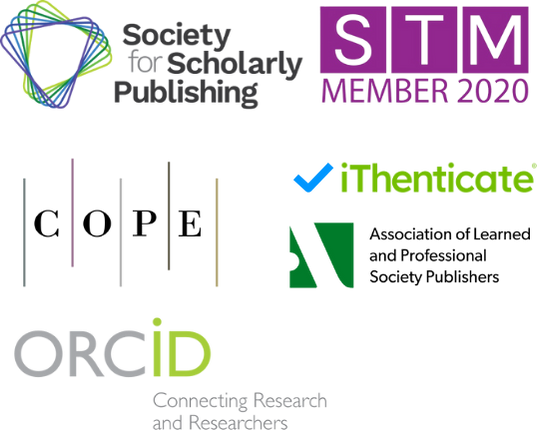Forecasting University Admission Rates in China's Gaokao Using ARIMA and ARIMAX Models
Keywords:
gaokao admission rate, ARIMAX model, educational forecastingAbstract
This study employs ARIMA, ARIMAX, VAR, and GLM models to forecast China's Gaokao admission rates using annual data from 1977 to 2024. The analysis focuses on the admission rate as the dependent variable, with GDP, newborn population, and policy dummies serving as exogenous factors. The results demonstrate that the ARIMAX model, which incorporates economic and demographic variables alongside PCA-based dimensionality reduction, outperforms the other models in terms of both accuracy and interpretability. Predictions indicate an admission rate of 78.47% for 2025 and 83.55% for 2029. The findings emphasize the crucial role of external factors in forecasting and offer valuable methodological and policy insights for higher education planning.
References
1. H. Zhang, and J. Wang, "Effective predictions of Gaokao admission scores for college applications in Mainland China," arXiv preprint arXiv:1809.06362, 2018.
2. X. Chen, Y. Peng, Y. Gao, and S. Cai, "A competition model for prediction of admission scores of colleges and universities in Chinese college entrance examination," Plos one, vol. 17, no. 10, p. e0274221, 2022. doi: 10.1371/journal.pone.0274221
3. S. Mao, C. Zhang, Y. Song, J. Wang, X. J. Zeng, Z. Xu, and Q. Wen, "Time series analysis for education: Methods, applications, and future directions," arXiv preprint arXiv:2408.13960, 2024.
4. S. Zhang, "A Comparison of Educational Equality and Equity in Gaokao and Admission System between China and the United States," Arts, Culture and Language, vol. 1, no. 3, 2025. doi: 10.61173/qz7kg098
5. L. Qin, K. Shanks, G. A. Phillips, and D. Bernard, "The impact of lengths of time series on the accuracy of the ARIMA forecasting," International Research in Higher Education, vol. 4, no. 3, pp. 58-68, 2019.
6. Y. A. Chen, R. Li, and L. S. Hagedorn, "Undergraduate international student enrollment forecasting model: An application of time series analysis," Journal of International Students, vol. 9, no. 1, pp. 242-261, 2019.
7. R. Parvez, S. I. Ali Meerza, and N. Hasan Khan Chowdhury, "Forecasting student enrollment using time series models and recurrent neural networks," 2021.
8. D. F. Chang, C. C. Chen, and A. Chang, "Forecasting with ARIMAX models for participating STEM programs," ICIC Express Letters. Part B, Applications, vol. 11, no. 2, pp. 121-128, 2020.
9. R. H. Shumway, and D. S. Stoffer, "Time series regression and ARIMA models," In Time series analysis and its applications, 2000, pp. 89-212. doi: 10.1007/978-1-4757-3261-0_2
10. I. T. Jolliffe, and J. Cadima, "Principal component analysis: a review and recent developments," Philosophical transactions of the royal society A: Mathematical, Physical and Engineering Sciences, vol. 374, no. 2065, p. 20150202, 2016. doi: 10.1098/rsta.2015.0202
11. J. H. Stock, and M. W. Watson, "Vector autoregressions," Journal of Economic perspectives, vol. 15, no. 4, pp. 101-115, 2001. doi: 10.1257/jep.15.4.101
12. E. Zivot, and J. Wang, "Vector autoregressive models for multivariate time series," In Modeling financial time series with S-PLUS®, 2006, pp. 369-413.
13. M. C. Düker, D. S. Matteson, R. S. Tsay, and I. Wilms, "Vector autoregressive moving average models: A review," Wiley Interdisciplinary Reviews: Computational Statistics, vol. 17, no. 1, p. e70009, 2025.
14. A. Bahuguna, A. Uniyal, and V. Vallabh, "ARIMA based projection of infant mortality rate by the year 2030: a comparative analysis of India and Madhya Pradesh," BMC Public Health, vol. 25, no. 1, p. 2693, 2025. doi: 10.1186/s12889-024-21073-9
15. A. J. Ikughur, T. Uba, and A. O. Ogunmola, "Application of residual analysis in time series model selection," Journal of Statistical and Econometric Methods, vol. 4, no. 4, pp. 41-53, 2015.
16. M. K. I. B. Muhammad, "Time series modeling using markov and arima models (Doctoral dissertation, Master's thesis, University of Technology Malaysia, 2012. http://eprints. utm. my/29783/5/MohdKhairulIdlanMFKA2012. pdf)," http://eprints. utm. my/29783/5/MohdKhairulIdlanMFKA2012. pdf), 2012.
17. C. I. Ugoh, C. A. Uzuke, and D. O. Ugoh, "Application of ARIMAX Model on forecasting Nigeria's GDP," American Journal of Theoretical and Applied Statistics, vol. 10, no. 5, p. 216, 2021.
18. J. R. Andrianady, "Crunching the Numbers: A Comparison of Econometric Models for GDP Forecasting in Madagascar," 2023.
19. S. Ghosh, S. Mukhoti, and P. Sharma, "Impact of rainfall risk on rice production: realized volatility in mean model," arXiv preprint arXiv:2504.10121, 2025.


